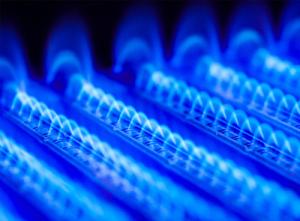To what extent should we transform how Americans heat their homes? This has become a burning issue if you will. The use of natural gas to heat homes does emit carbon dioxide, a contributor to climate change.

Of the hundred and twenty-two million occupied housing units in the U.S., 47.6 percent do heat their homes with utility gas. 39.3 percent heat with electricity. This according to new U.S. Census data published last week.
That 47.6 percent means more than fifty-eight million households depend on gas service in the winter. It’s a lot of homes to transform.
These households used 4.7 trillion cubic feet of gas in 2021, according to the Energy Information Administration. Which is great deal of gas.
Yet the U.S. overall used 30.3 trillion cubic feet. This total includes the consumption of gas by power plant, commercial and industrial customers as well as by households. The fifty-eight million households therefore account for no more than a 15.4 percent slice of the gas combusted in the country.
That 47.6 percent gas and 39.3 percent electricity breakdown is for the five-year period ending in 2020. These percentages are notably down for utility gas as compared to the five-year period ending in 2015, from 48.6 percent. And they are up for electricity, considerably, as compared to the period ending in 2015, from 37.2 percent.
There are other ways that Americans heat their homes. For the five years ending in 2020, 4.6 percent heat with fuel oil, kerosene, and similar fuels. These oil fuels emit carbon dioxide at a greater rate than gas when burned. Fortunately, the 4.6 percent is quite considerably down from the five years ending in 2015, when these fuels heated 5.6 percent of homes nationally.
Depending upon what state you’re looking at, the percentages can vary widely. For instance, 91.9 percent of the homes in Florida heat with electricity while just 4.7 percent do so with utility gas. At the other extreme, 76.9 percent of the homes in Illinois heat with utility gas while just 17.1 percent do so with electricity.
New Jersey is 74.5 percent utility gas. In contrast, South Carolina is 71.5 percent electricity.
Then there’s New England, where fuel oil, kerosene, and similar fuels heat a relatively higher percentage of the homes. Take Maine for example. Of the homes there, 61.2 percent are heated with those oil fuels. Only 7.8 percent are heated with utility gas and 7.4 percent with electricity.
There are wide differences depending upon the type of home as well. Almost two-thirds of American homes are owner occupied. Of those, utility gas is the predominant way they are heated, at 51.9 percent. Electricity in comparison has only a 32.9 percent share.
The story is much different among the one-third or so of American homes that are renter occupied. For them, electricity is the predominant way they are heated, at 51.0 percent. Utility gas in comparison has only a 39.9 percent share.
The experts tell us that the heating of some homes is much more easily transformed from utility gas to electricity than others. The local climate is a big factor. Electric heating is generally more practical in the southern tier of the country than in the northern tier where winter temperatures really plunge. Other factors include the home’s age and configuration, and household income.
So, like most burning questions, the answers are complicated and often a little this and a little that. It does seem that electricity is destined to take a significantly larger share of the home heating market, at the expense of the shares of oil for sure and gas too.
What is the most cost-beneficial transformation of home heating? Especially when one considers that there’s plenty of low-hanging electrification fruit around. Such as in transportation and for a range of commercial and industrial applications.

